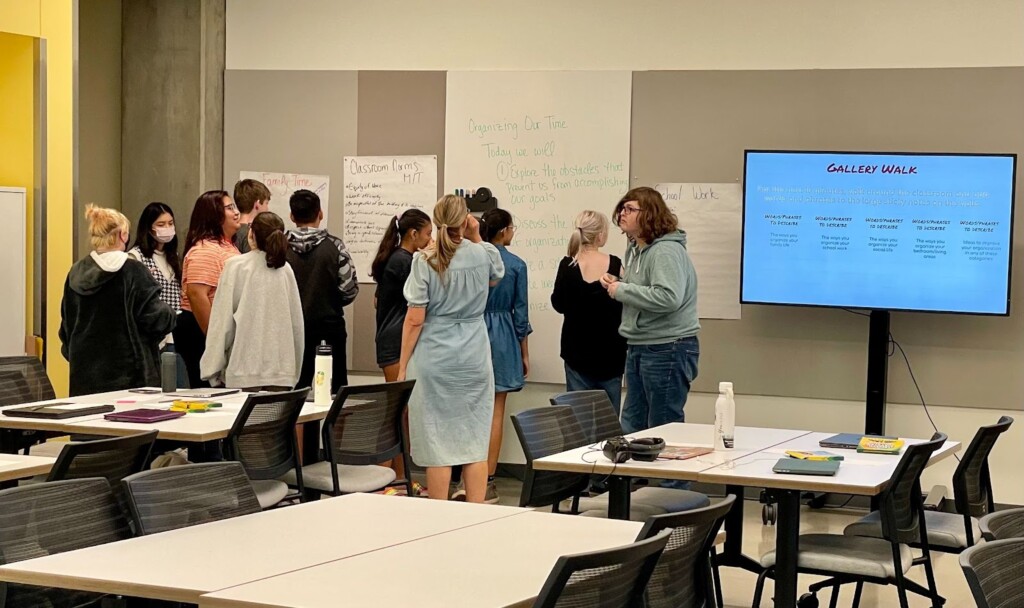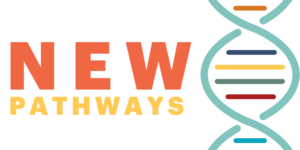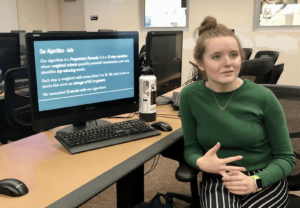School Districts and Charter Authorizers Need Innovation Pathways
Key Points
-
It’s time for more new schools that meet new demands and take advantage of new opportunities–new schools inside public schools and public districts and new charter schools and networks.
-
School districts and charter authorizers could both use a responsive innovation pathway that supports new learning models rather than blocking them.

We’re still stuck. We’re trapped in an inherited system of discipline-based courses that dictate pedagogy, schedules, staffing, funding, progress reporting–even the eggcrate building architecture. Even after flipping to online pandemic teaching, most systems have snapped back to traditional delivery. Only now, many students are less engaged, more traumatized, have big learning gaps, or aren’t showing up at all.
As we enter the fifth industrial revolution (right, we were just getting used that confusing 4IR), a hypperconnected complex world of human-machine interaction, work is increasingly the art of framing and attacking new problems in diverse teams using smart tools.
The changing nature of human enterprise (and citizenship) suggests that we need new learning goals, new learning experiences, and new ways to communicate capability. We need to invite young people into work that is important to them and their community–more opportunity spotting, more solution designing, more impact delivering (see KEEN for higher ed engineering examples).
Breaking out of the box of courses and grades represents several problems of practice including how to organize and support more community-connected projects and entrepreneurial experiences and how to capture and communicate human capability. And, given the events of the last two months, how to craft new ethics of learning, working, and creating with smart tools.
There are a few examples of networks working on these challenges. More than 30 school districts and charter networks in metro Kansas City are working on these real world learning design challenges through school transformation and new microschool development. Some systems are issuing digital credentials for next-gen learning experiences.
Each student experience at XQ sponsored schools like Purdue Polytechnic High School is a unique sequence of client-connected and co-authored projects–challenging, purposeful, and supported. XQ Math is a project-based math curriculum with badges that certify achievement.
ASU Prep is opening new microschools on ASU campuses (see featured image) and hosting Khan World School that includes daily seminar socratic-style discussions about real-world topics.
These problems of practice–how to organize, support and credential authentic and challenging work– warrant more new school development.
It’s time for more new schools that meet new demands and take advantage of new opportunities…
Tom Vander Ark
It’s time for more new schools
Post-pandemic there is a new level of acceptance for hybrid work and learning environments. There is also a stronger demand (by adults as well as students) for a sense of purpose and meaningful engagement. With deep learning gaps, there is more challenge than ever. New learning tools and the platform economy offer more opportunity than ever.
A National Parent Union survey suggest that two thirds of parents (and more than three quarters of Black parents) want schools to focus on re-thinking education and new ways of teaching and learning (i.e., not go back to the way things were pre-pandemic). And, with good reason, there is more interest in attracting more teachers and leaders of color into new school formation.
A few school districts are forming new small schools to illustrate the path forward. In Kansas City, Liberty Edge and North Nation promote real world learning through interdisciplinary studies. In Longmont Colorado, Skyline P-TECH combines high school, college, and tech internships into a powerful new bargain (one of about 300 P-TECH schools).
While charter networks in some states continue to gain approval for new schools, new applicants find it more difficult than ever to gain approval for new schools–particularly for innovative models.
It’s time for new innovative authorizing
Charter schools, in part, were supposed to be the showcase of innovative practices in education. But well-intentioned efforts to promote quality in authorization have resulted in a bureaucracy that inhibits rather than fostering innovation.
I’ve been advocating for authorizing practices that encourage innovation for a decade so I appreciate new recommendations from the National Association of Charter School Authorizers:
- Double down on known quality authorizing practices,
- Shift rigor from paper to people,
- Align the application process to how new schools actually develop,
- Create innovation portfolios,
- Collaborate and communicate: authorizers, charter support organizations, charter management organizations, incubators, and community,
- Evolve definitions of school quality,
- Change who authorizes in some contexts, and
- Better assess need and demand
On creating innovation portfolios, NACSA suggests:
- Designating a portion of portfolio to focus on dramatically different approaches to teaching and learning, with rigorous, yet different expected student and school outcomes.
- Leaning into pilot programs or small learning communities to explore innovation on a small scale and grow (as appropriate) when success is evident.
- Allowing for really different ways of organizing teaching and learning to emerge.
- Ensuring those kinds of schools have a special designation so families understand that what the folks are trying in those spaces is new and different (and how).
This sort of innovation pathway for quickly testing and demonstrating new approaches requires some policy changes in some places allowing for a more flexible approach to accountability and other rules that won’t make sense in that context. It should be accompanied by microgrants that support rapid prototyping and testing.
It’s time for more new schools that meet new demands and take advantage of new opportunities–new schools inside public schools and public districts and new charter schools and networks. School districts and charter authorizers could both use a responsive innovation pathway that supports new learning models rather than blocking them.








0 Comments
Leave a Comment
Your email address will not be published. All fields are required.